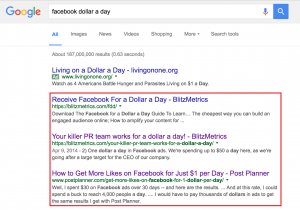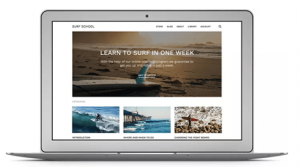
Have you ever received a really awful gift?
I mean, a gift so inconceivably terrible, so obviously not you that you had a difficult time concealing your surprised disappointment? It would be ungrateful and selfish to admit you didn’t like a gift another person went out of her way to purchase, wrap and present to you, so you graciously accept, oohing and aahing over the unwanted item.

But deep down, you can’t help but wonder:
“Why would anyone think this is something I need?”
When you fail to use personalization, that’s precisely the sort of question echoing in the minds of your customers and prospects. But use personalization well, and your customers will light up like a child on Christmas morning — and trust your brand to deliver the software solution they can trust to meet their needs. In fact, a study released by Demand Gen Report shows personalized experiences can increase sales by as much as 20 percent.
No matter how successful your company, everyone is looking for a final-quarter bump. Let’s look at a few of the ways you can use personalization to boost sales — fast.
Use Segmentation to Improve Relationships
Personalization increases engagement for the simple reason that people respond better to things that are about them. Just as including the words “you” and “your” in email subject lines yields higher open rates, and seeing our name grasps our attention immediately, reading content that addresses our specific concerns evokes feelings of familiarity and appreciation.
For example, let’s say your company sells team collaboration software and two of your primary buyer personas are office managers and small-business CEOs. For the office manager, you’d focus on the challenges of wearing many hats and facilitating communication between teams. For the small-business CEO, you’d focus on cost benefits, efficiency and productivity.
By taking the time to segment your audiences and speak directly to the unique pain points of each segment, you prove to your prospects that you understand their specific needs and challenges. Most importantly, you earn their trust and confidence. This not only translates into initial sales, it builds long-term loyalty.
Use Data to Make More Relevant Recommendations

Why did you watch that last show on Netflix? Make that most recent Amazon purchase? The recommendations these companies provide users are so keenly on point, consumers have come to rely on and expect them. Of course, the more binge-watching you engage in, and the more one-click ordering you complete, the better these recommendations become.
Data allows businesses to better understand their consumers, and this understanding allows businesses to recommend products and services more in-line with what their prospects want.
For example, let’s say a consumer recently viewed a blog post titled “3 Tips for Real-time Customer Communication” and then downloaded your eBook “The 5 Best Ways to Communicate with Customers Online.” Based on these actions, you could suggest a mid-funnel blog post about why live chatting increased site engagement or a case study on how implementing chat software decreased a company’s lost sales. By the time you suggest a software demo, your prospect will trust your recommendation ability.
Tailor Content to Referral Sources
The way in which a prospect reaches your site plays a big part in what he’ll engage with your brand. Don’t think so? Consider the following.
Joe is a marketing manager at a large car dealership in the Southeast. He attends an automotive trade show where he stops by your company’s booth, chats with a sales rep and watches a demo for your CRM tool. Intrigued, he signs up for your mailing list.
Jane is also a marketing manager at a large car dealership in the Southeast. While browsing Facebook on her lunch break, she sees an ad for your new eBook on marketing to Millennial car buyers. She fills out a form to receive the eBook.
Joe and Jane have the same job, in the same region, for similar-sized companies. They’re interested in the same product. For all intents and purposes, their buyer journey should be the same. But the method by which they arrived on your site will affect their next steps. By considering their referral sources, and using it to personalize their experience, you can increase your chances of making a sale.
For example, Joe already has spoken with a sale rep and even watched a demo. The best way to engage Joe may be to send an email thanking him for stopping by the booth and inviting him to check out your testimonials. On the other hand, the best way to engage Jane — who has never engaged with your brand until downloading the top-funnel eBook — may be an invitation to subscribe to your blog updates, or read a recent case study, so she can become more familiar with your brand.
Conclusion
Effective personalization requires that you understand your buyer personas, review behavioral data and consider what marketing channels and platforms drive prospects to your site — and that sounds like a lot of work. But by putting in the time to tailor experiences to the expectations and needs of your prospects, you can increase your close rate as well as the satisfaction of your customers.
(126)






